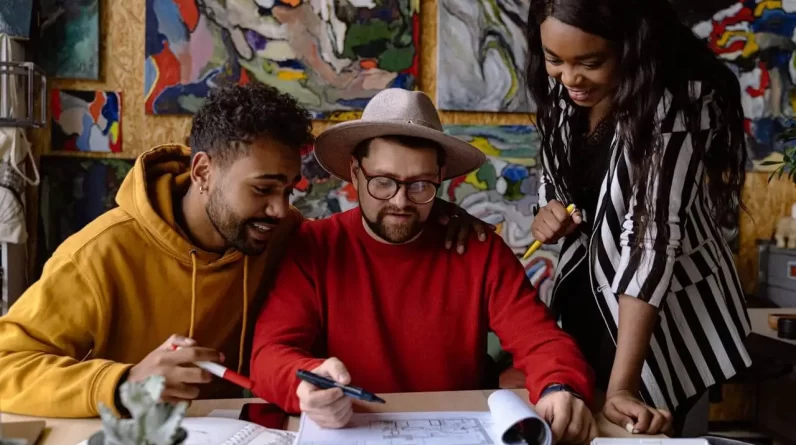
Failure is inevitable. This is a fact of life.
However, how you perceive failure determines what path you take. And here’s a little secret: Failure is not a permanent state of being. It’s not world-ending. Merely, failure means you tried and didn’t succeed, at least not during this round.
- So, in the face of failure, what should you do?
- What actions can you take when you fail to achieve your goals?
- How can you “fail forward” and live the life you want?
What to Do When You Fail to Achieve Your Goals?
Sometimes, we simply don’t achieve our goals. It’s clear: It’s our fault. We set the goal, and our actions didn’t achieve it.
Sometimes, we accept this. Sometimes, we don’t.
The problem is that it’s easy to beat ourselves up about it and resign this failure as a clear indicator of who we are. But this simply isn’t true.
Ariana Huffington has said, “Failure is not the opposite of success. It is part of success.”
The only true failure happens when we give up. At the same time, failure can indicate to us that maybe our goals aren’t aligned with who we want to be, or perhaps we need to change something to make it work.
Either way, there is a learning opportunity to be had that will propel your life forward and enhance it in multiple ways.
So, what should you do after failing? Here are the seven steps you should take right now.
Related Article: Hello 2023: 5 Ways to Create the Kind of Year You Truly Desire
7 Steps to Take Immediately if You’ve Experienced a Setback
Step 1: Accept it.
You failed. Not to minimize it, but it happens to the best of us. One simply doesn’t get through life without a few serious slip-ups. This is what being human is all about.
The sooner you move past the denial stage, the better. Accept that it happened. Accept responsibility for it. And most importantly, understand that this doesn’t define you.
One slip-up isn’t who you are. How you handle that slip-up shows your true characteristics, and you should absolutely take this information and run with it (Let it empower you!).
Step 2: Determine what went wrong.
- What caused you not to achieve the goal?
- What actually did go well?
- How can you improve the areas where you fell short?
- Or an even better question: Is this truly a goal you want to achieve?
Asking all of these questions is part of your analysis and reflection. If this is a goal you want to continue with, make sure to make a plan to tackle the issues you faced during this round. If it’s not a goal you want, ask yourself what you envision your future life to look like, then create goals around that.
Try to be very mindful here. Avoid self-blame, but be honest with yourself. Take responsibility where it’s due. Don’t try to blame external sources for your failure (These are out of your control anyway!).
This moment is all about understanding yourself more and what habits will help you get to where you truly want to be.
Step 3: Learn from it.
Take what you need. Leave what you don’t.
From this failure, there is something to learn. In your analysis above, you would’ve narrowed in on this. But this is where you really want to focus on the lesson and ensure you don’t fall into the same spot twice.
The key here is your perspective. You need to view “failure” as a learning opportunity. When you do, the world opens up.
You see things differently. You actually can grow and improve.
Step 4: Let it go.
The other side of taking what you need is leaving what you don’t.
Those potential emotions of self-hatred aren’t necessarily helping. Sure, it’s important to be realistic and fess up where you messed up. But is it helpful to berate yourself and continue down a slippery slope of self-critique? Not really.
Let the negativity go. Take the lesson and run.
Step 5: Ask for feedback (if applicable).
If you’re still unsure what to do and you’ve mulled it over yourself, it might help to ask for an outsider’s perspective.
Ask a trusted colleague, friend, or family member for their opinion.
Sometimes, when we are down on ourselves, it can be tough to view a situation from an objective point of view. This is where someone else can help!
Step 6: Make a plan forward.
You either know that you want to pursue this goal or you may know now that you have other goals in mind.
The next step is making a plan. What are the steps to achieve what you want? Break that big vision or goal down into small steps that are realistic and achievable.
Related Article: How To Regain Momentum After Setbacks Or Failures
Step 7: Take action.
Got your plan? Great. Take that first step. Keep the momentum going.
The sooner you take a step forward, the farther behind that failure is and the closer you get to where you actually want to be.
Build the Life You Want
Failure isn’t the end. In fact, for many, it can spark the very beginning of something great. So, take this failure, learn from it, and thrive. Use it to build the life you want, and don’t let anything hold you back.
Read Next: 9 Helpful Ways To Deal With Setbacks And Failures
Photo by Antoni Shkraba







